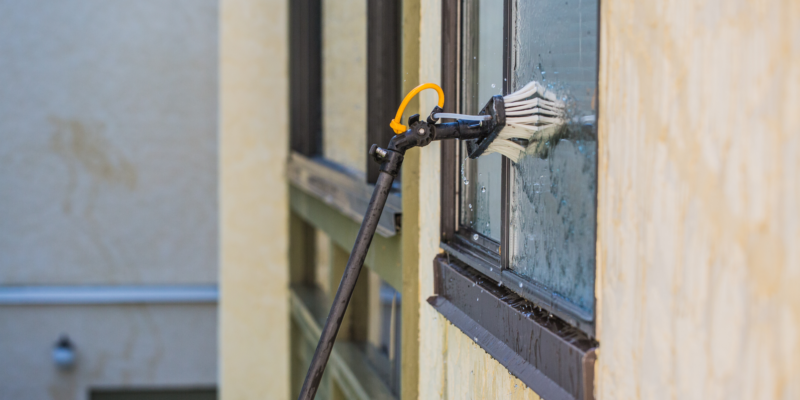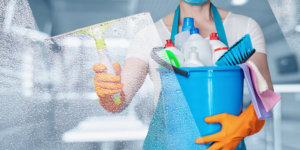Window cleaning for high-rise buildings presents unique challenges and requires strict safety measures to protect workers and the public. These towering structures often have vast expanses of glass that demand regular maintenance and cleaning. In this guide, we will explore essential tips for ensuring the safety of window cleaning professionals and the effective cleaning of high-rise building windows.
The Importance of High-Rise Window Cleaning Safety
Cleaning windows on tall buildings is a high-risk task that demands meticulous attention to safety for several reasons:
Height-Related Risks: High-rise window cleaning involves working at significant heights, increasing the risk of falls and accidents.
Public Safety: Falling debris or accidents can endanger people on the ground, making safety precautions crucial.
Property Protection: Proper safety measures prevent property damage during the cleaning process.
Legal and Regulatory Compliance: Compliance with safety regulations is not only ethical but also a legal requirement.
Safety Measures and Equipment
The safety of window cleaning professionals should be the top priority. Here are some key safety measures and equipment to consider:
Fall Protection: Ensure workers are equipped with harnesses, lanyards, and anchor points to prevent falls. Window cleaning professionals should be trained in using this equipment correctly.
Safety Nets: Install safety nets or catch platforms on the ground to catch falling debris or personnel in case of accidents.
Proper Ladder and Scaffolding Use: Ensure that ladders and scaffolding are in good condition, securely placed, and used according to safety guidelines.
Powered Platforms: Use powered platforms like boom lifts or suspended scaffolds to provide stable working platforms at heights.
Proper Maintenance: Regularly inspect all equipment and safety devices to ensure they are in good working order.
Training and Certification
Window cleaning professionals should receive proper training and certification to perform their duties safely:
Training: Ensure workers receive comprehensive training in window cleaning techniques, safety procedures, and equipment use.
Certification: Consider certification from relevant organizations, such as the International Window Cleaning Association (IWCA), to ensure adherence to industry standards.
Regular Refresher Courses: Encourage employees to participate in periodic refresher courses to stay up-to-date with safety practices.
Assessing Building Specifics
Each high-rise building presents unique challenges for window cleaning. It’s essential to assess building specifics to determine the best approach and equipment:
Building Height: The height of the building determines the type of equipment and safety measures required.
Architectural Features: Consider any architectural features like overhangs, setbacks, or decorative elements that may affect access.
Glass Type: Different glass types may require specific cleaning solutions or techniques.
Weather Conditions: Assess local weather conditions and their impact on safety, scheduling, and cleaning methods.
Environmental Considerations
Window cleaning professionals should also consider environmental impacts:
Water Use: Minimize water usage by using efficient cleaning techniques and equipment.
Wastewater Control: Collect and dispose of wastewater in an environmentally responsible manner.
Chemical Usage: Use environmentally friendly cleaning solutions to reduce chemical pollution.
Legal and Regulatory Compliance
Window cleaning for high-rise buildings is subject to legal and regulatory requirements:
Safety Regulations: Adhere to local, state, and federal safety regulations for high-rise window cleaning.
Insurance: Ensure that window cleaning professionals are covered by appropriate insurance policies to protect against accidents and property damage.
Permits: Check for any permits required for high-rise window cleaning in your area.
Effective Cleaning Techniques
While safety is the priority, effective cleaning is also crucial. Consider these cleaning techniques:
Water-Fed Poles: Water-fed poles with soft brushes allow for cleaning from the ground, reducing the need for elevated equipment.
Pure Water Systems: Pure water systems eliminate the need for chemical detergents and leave windows streak-free.
Traditional Methods: Traditional methods, such as squeegees and hand washing, may be necessary for specific situations.
Conclusion
High-rise window cleaning is a critical aspect of maintaining the aesthetics and functionality of tall buildings. However, safety must always come first. Proper training, the use of safety equipment, and strict adherence to safety regulations are essential to protect the workers and the public. By following these guidelines and using effective cleaning techniques, window cleaning professionals can ensure the pristine appearance and safety of high-rise buildings while minimizing the environmental impact.


